-
Posts
1,330 -
Joined
-
Last visited
Content Type
Profiles
Forums
Events
Articles
Marionette
Store
Posts posted by Stephan Moenninghoff
-
-
-
 4
4
-
-
3 minutes ago, halfcouple said:
Hi Guys,
thanks so much for the help ! Think I never got the solution alone. I need to do this with different side lengths so 1200 and 750 are only an example. So the reproduceable method is to calculate the "double angle" Edges / (Edges/2 -1) / 360 and split it up by the proportion of the side lenghts. Two parallel lines for each side cross the angle at the desired radius.
I will check that for other length combinations.
It works with any number of edges, as long as there are always two of each. I'll make you a quick Marionette. After my supper.
-
 2
2
-
-
22 hours ago, Kevin McAllister said:
When I open your file and measure the alternating segments, they are 866 and 1084, not 750 and 1200?
KM
Wrong file, sorry, press reload. So, the radius is 2193.841978
-
Just now, Kevin McAllister said:
Yes, there is a margin of error. But its likely within construction tolerances and VW's math method.
KM
Not if you calculate correctly, pal 🙂
-
Here's the file. The formula is based on the knowledge that the angle between all edges is the same.
So the angle = 1/ Edges / (Edges/2 -1) / 360
If you rearrange that you get the angle. From there on you construct your polygon using VWX.
-
The radius is 2322.5267mm, according to my calculations.
-
Kevin, I have to challenge your solution. Your short lines are 751.253. Thats not correct. 🙂
-
 1
1
-
-
5 minutes ago, Kazemester said:
I know how to isolate points, what i ment is imagine a big pointcloud and you just want to hide some points in the middle. There are always other points in your way from your pov but using clipcube could solve this problem...or at least i thought it does. But when i isolated those points the other points were isolated as well outside the clipcube (which were not visible outside the clipcube).
Yes, I get it. The clip cube is a visibility thing. That's sometimes counter-intuitive as you would expect objects that are hidden to behave like they are hidden and not be affected by selection. I cannot imagine dealing with point clouds without the clip cube but I share your view on how it should behave.
-
 1
1
-
-
-
Hmm... maybe @Marissa Farrell should have a look and confirm it's a bug.
-
 1
1
-
-
You mean they disconnect and reconnect to a different input port?
-
You need Set Entity Matrix to get this to work. I had a similar thing the other week which I just remembered where 2D circles had to be stacked to create a 3D routing contour:
-
@STA check your network again. I had a quick look - when I alt-drag your Marionette to make a copy, the new object gets corrupted. I'm not saying there is not a bug also (I had a similar thing happening with the "Set 2D Vertex" node in wrapped objects) but I would first try and fix the network.
HTH
-
On 7/22/2019 at 3:57 PM, Tamsin Slatter said:
Hmm, I don't know Stephan, but I will check. But I am very excited to see a new version of your Books tool!
Hi Tamsin, I have now posted a DropBox link. Upload is terminated with unknown error (-200). I have included some lever arch files in the embedded library of symbols.
-
 1
1
-
-
1 hour ago, Nicolas Goutte said:
Jim Wilson has once ago meant that the limit was 2 MB. No idea if this limit from 2015 is still valid.
I don't think this was ever true for the Marionette section. Books 2.2 have 331.1MB, Books 2.3 have 337.8MB. My guess is something broke somewhere on the way.
-
35 minutes ago, RussU said:
splitting across multiple zip files might help?
I don't think that works with the Marionette download system. I have no idea how large the other Marionettes are but maybe I have just hit the ceiling.
-
I was about to upload a new version of my Books Marionette, containing some lever-arch file symbols but the upload was cancelled with an error. Is there a limit to file sizes?
Thanks.
-
 1
1
-
-
I suppose some more swapping of columns is necessary to make the offset more uneven 😁
-
After some major refactoring (actually, a rewrite), the network has become more elegant and much smaller. Modifying the points before they are fed into the polygon proves much faster and more manageable. Now, it's also easier to add more options (movement of vertices along the x axis?). And since the "Set 2D vertex" node is now redundant, the whole Marionette works as an object.
-
 1
1
-
-
Added some numbering and introduced a second random parameter. Now, each of the four vertices is randomly moved in y direction. It's actually something I needed as well so you're in luck 🙂. I have filed a bug about the object node not playing nice with the "Set 2D Vertex" node so once that's fixed this will be quite a fun object to play with.
-
 2
2
-
-
I've actually done it. It doesn't convert to an object node. The "Set 2D Vertex" node fails inside the object node. @Marissa Farrell can you confirm?
@mickcullinan you need to pick the offset values out of a list of random values and apply those offsets to the vertices in each poly. Looks a bit messy because I was not able to enter more than one value for the "Set 2D Vertex" node. I think that is actually supposed to work. I suppose you want the top and bottom rows to remain flat on the outside. The "Remove At" node is good for picking every nth value. Careful if you have more offset values than polygons because the last poly will receive the last value in the list. Better to strip the excess ones using "Split List" (although that's kinda hacky).
This can probably be done more elegantly but it works.
-
@mickcullinan You need to make an array first and then modify the points. Can you work off this?
Convert the rects to polys and apply your point modifications. Set the Mix2 to "Cross reference".
-
Try undocking the object info palette. It's a knows issue. You running Mojave?
-



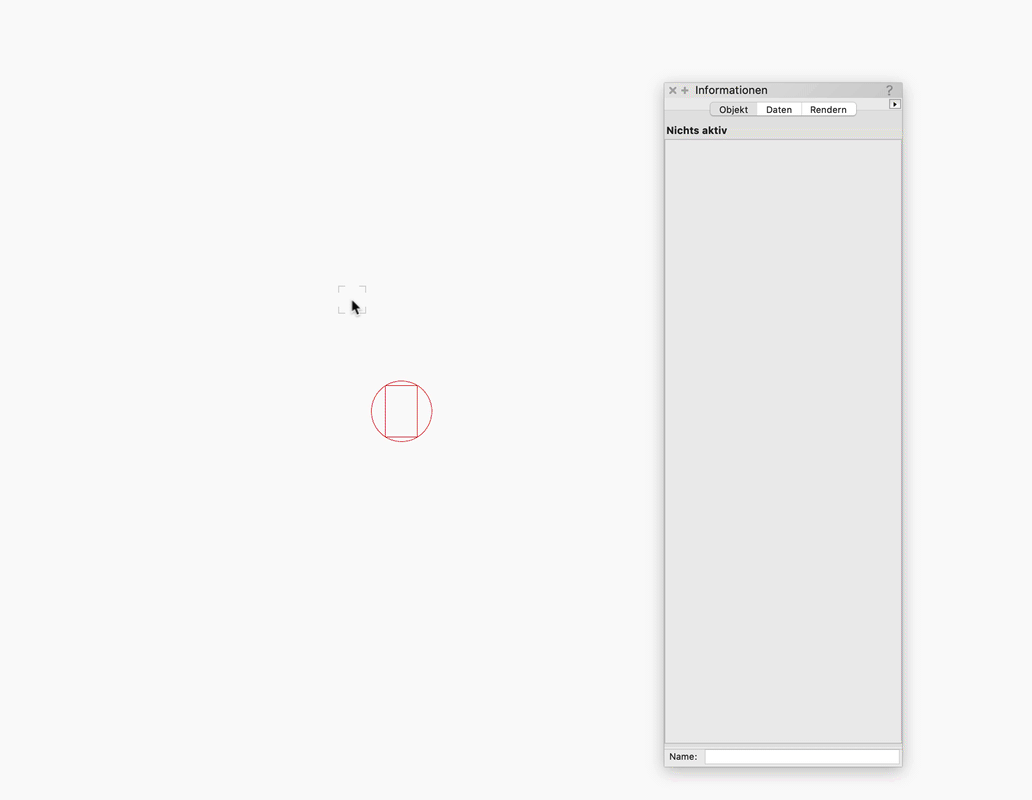
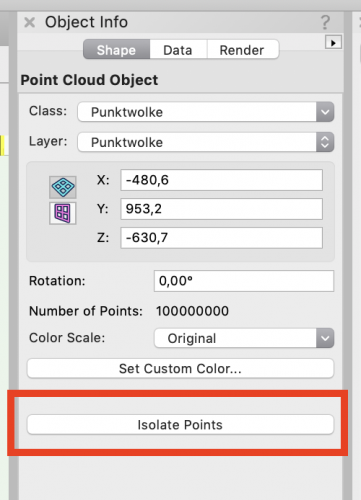
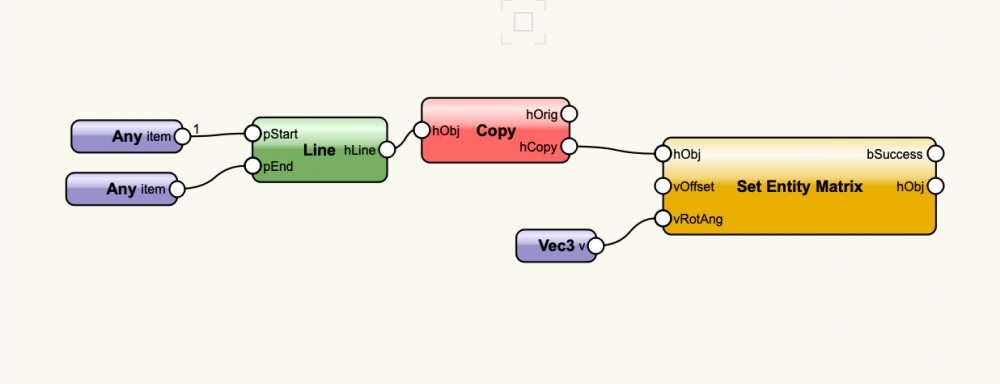
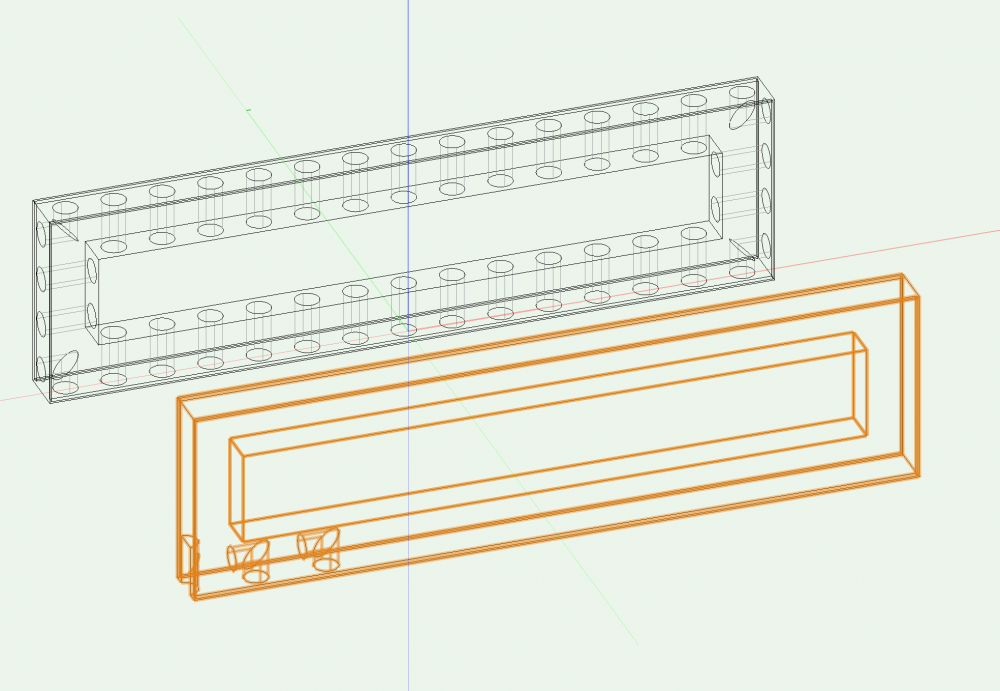

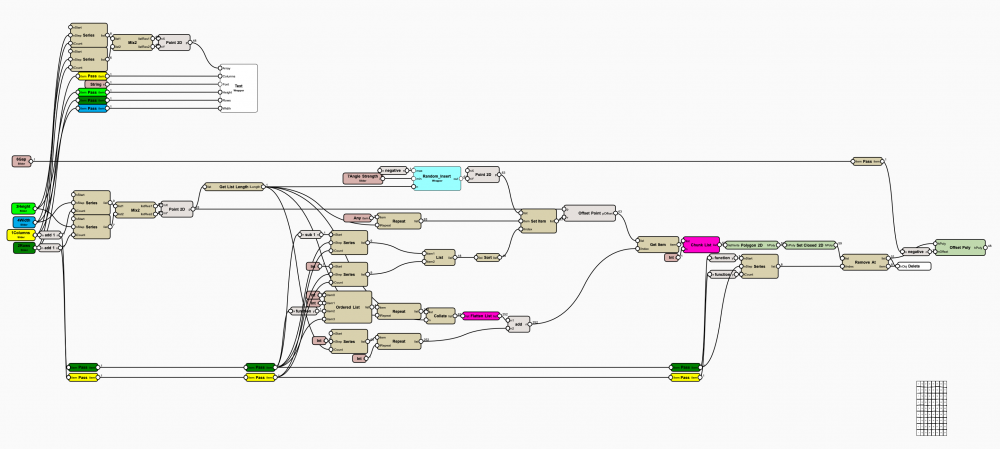
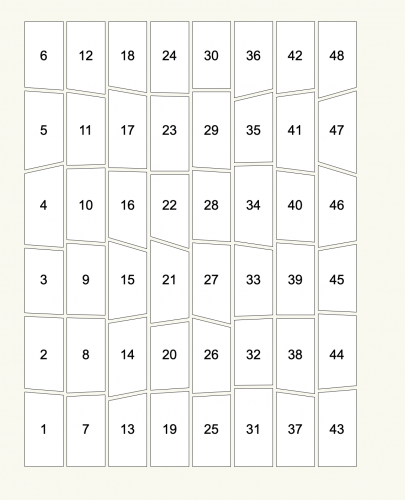
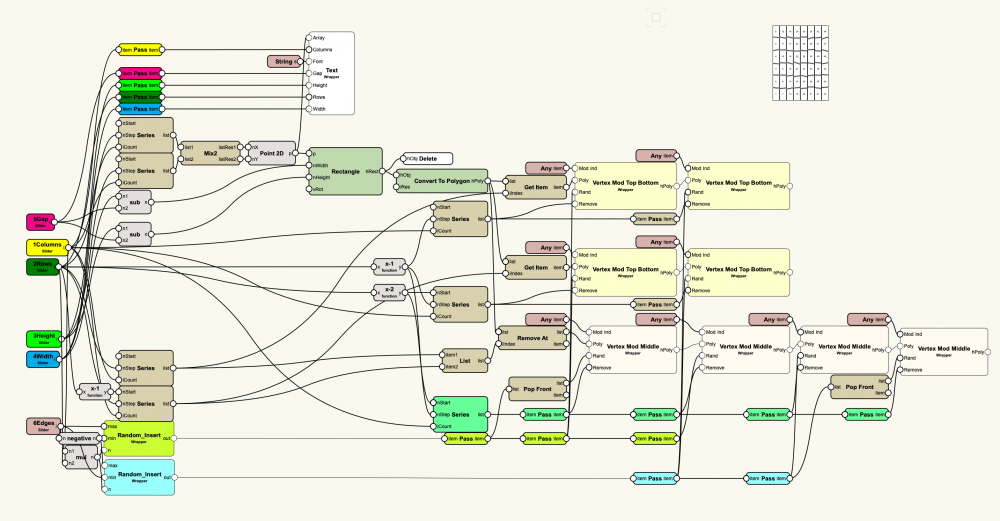
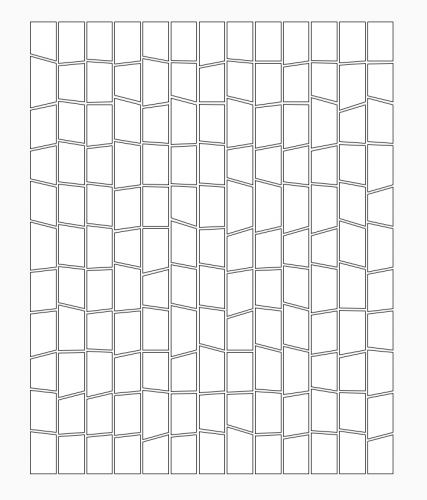
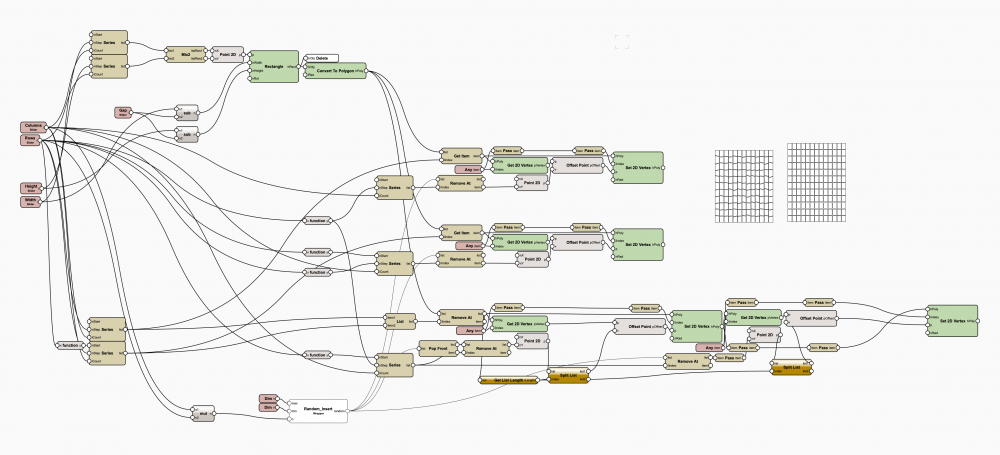
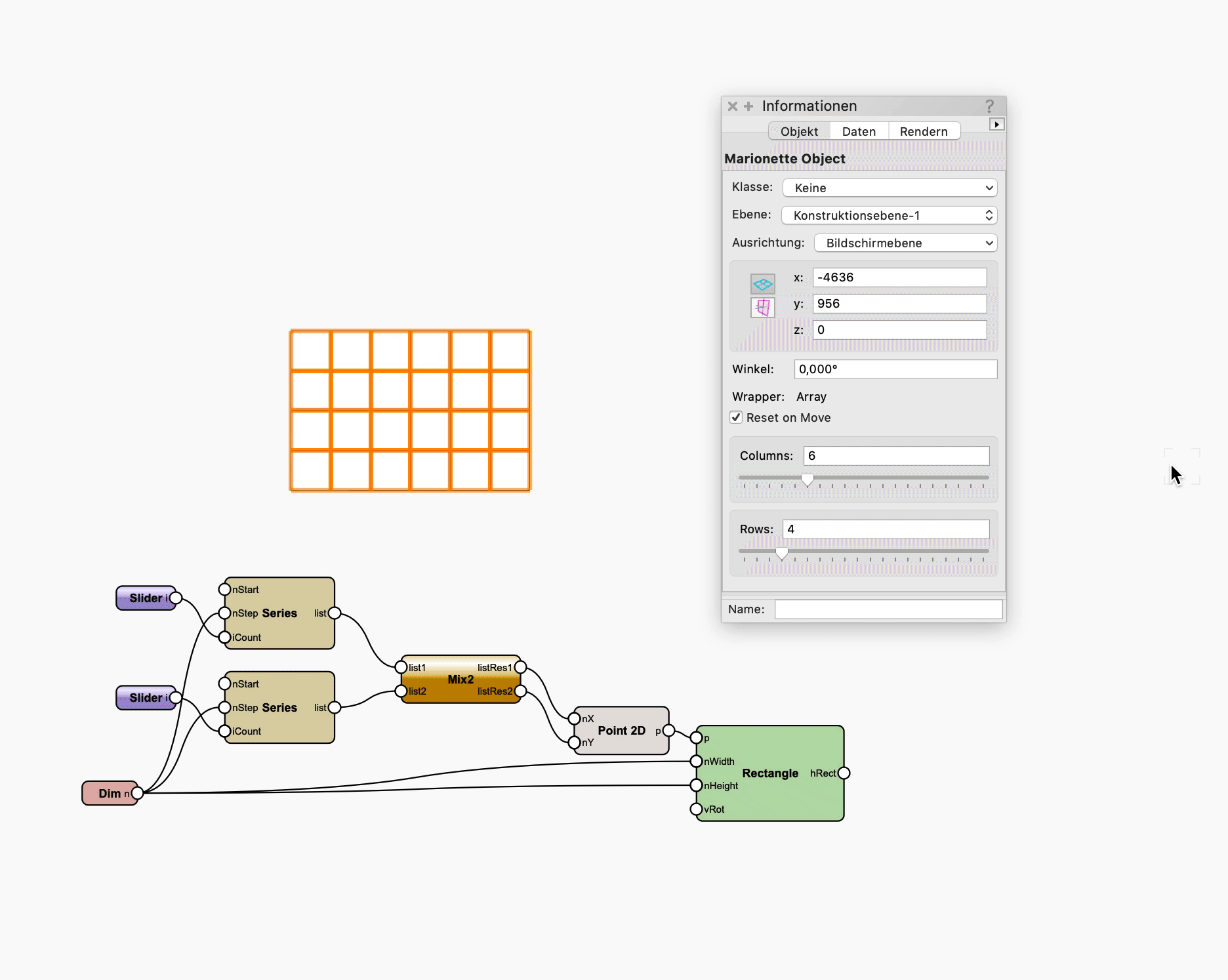
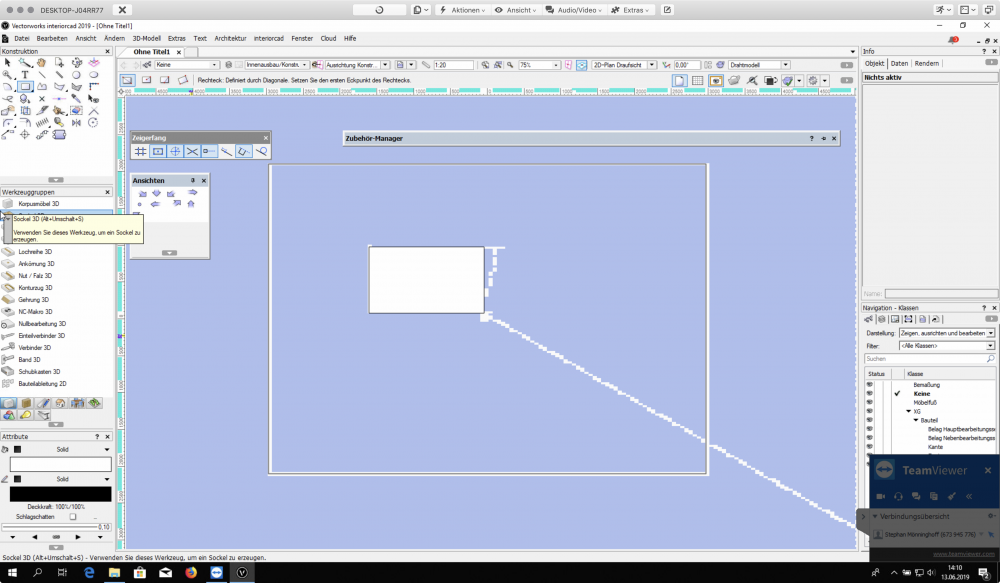

Regular Polygon with alternating side lenghts - a challenge, or a simple thing ?
in General Discussion
Posted · Edited by Stephan Moenninghoff
Yep, that's the same. (n-2)(180)/n.